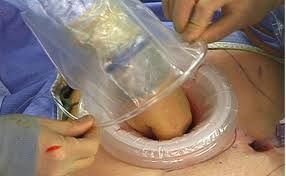The novel technique slightly increased WI time and intraoperative hemorrhaging, although it provided better postoperative affected renal function compared with the traditional technique. One of the 38 cases where segmental renal artery clamping was performed, 7 had to come to be the conventional method. Tumor size and placement influenced the amount of clamped segmental arteries.
Introduction
Laparoscopic partial nephrectomy (LPN) with segmental renal artery clamping (SRAC) is a minimally invasive surgical procedure used to remove a portion of the kidney while preserving as much healthy tissue as possible. This procedure is typically used to treat small kidney tumors or lesions. In this essay, we will discuss the LPN with SRAC procedure, including its indications, technique, advantages, and potential complications.
Indications for LPN with SRAC
LPN with SRAC is primarily indicated for the treatment of small renal tumors or lesions. These tumors are typically less than 4 cm in size and are located in the outer portion of the kidney. The procedure is also indicated for patients who have a solitary kidney or a medical condition that prohibits the removal of the entire kidney. LPN with SRAC is also used in cases where the patient's medical history or other factors make it difficult to perform a traditional open partial nephrectomy.
Technique of LPN with SRAC
The LPN with SRAC procedure is performed under general anesthesia. The patient is placed in a lateral position, and four to five small incisions are made in the abdomen. A laparoscope, a long thin tube with a camera on the end, is inserted through one of the incisions. The surgeon uses the laparoscope to view the kidney and surrounding tissue.
The next step is to isolate the blood supply to the part of the kidney that needs to be removed. This is done by clamping the segmental renal artery that supplies blood to that part of the kidney. The surgeon then removes the tumor or lesion, along with a small margin of healthy tissue, using a combination of laparoscopic instruments and a laser or electrocautery device. The remaining healthy tissue is then carefully sutured together to ensure proper healing.
Advantages of LPN with SRAC
There are several advantages to LPN with SRAC compared to traditional open partial nephrectomy. One of the main advantages is that it is a minimally invasive procedure that results in less pain, scarring, and blood loss. This can lead to a quicker recovery time and a shorter hospital stay. Additionally, the preservation of healthy kidney tissue can help prevent the onset of chronic kidney disease or the need for dialysis in the future. Finally, the use of SRAC can help minimize the risk of bleeding during the procedure, which can be a complication of traditional partial nephrectomy.
Potential Complications of LPN with SRAC
Like all surgical procedures, LPN with SRAC has potential complications. Some of the most common complications include bleeding, infection, and damage to surrounding organs or tissues. There is also a risk of renal ischemia, which is a decrease in blood flow to the kidney. This can lead to temporary or permanent damage to the kidney. However, with proper technique and patient selection, the risk of complications can be minimized.
LPN with SRAC is an advanced technique that requires specialized training and experience. Surgeons must have a deep understanding of renal anatomy and physiology, as well as laparoscopic surgical techniques. Additionally, surgeons must be able to identify and clamp the segmental renal artery accurately to minimize the risk of complications.
One potential disadvantage of LPN with SRAC is the potential for renal ischemia. Renal ischemia occurs when the blood flow to the kidney is reduced, leading to a decrease in oxygen supply to the kidney tissue. This can cause temporary or permanent damage to the kidney. To minimize the risk of renal ischemia, surgeons must carefully monitor the patient's blood pressure and kidney function during the procedure. Additionally, the duration of the clamping must be carefully managed to minimize the risk of ischemia.
Overall, LPN with SRAC is a safe and effective treatment option for select patients with small renal tumors or lesions. Patients who undergo this procedure typically have a shorter hospital stay, less pain, and a quicker recovery time compared to traditional open partial nephrectomy. However, as with any surgical procedure, patients should discuss the risks and benefits of LPN with SRAC with their healthcare provider before making a decision.
In conclusion, LPN with SRAC is a minimally invasive surgical procedure that can be used to treat small renal tumors or lesions while preserving as much healthy tissue as possible. This procedure offers several advantages over traditional open partial nephrectomy, including less pain, scarring, and blood loss, and a shorter recovery time. However, as with any surgical procedure, there are potential risks and complications that must be carefully considered. Patients should discuss the risks and benefits of LPN with SRAC with their healthcare provider to determine if it is the right treatment option for them.






